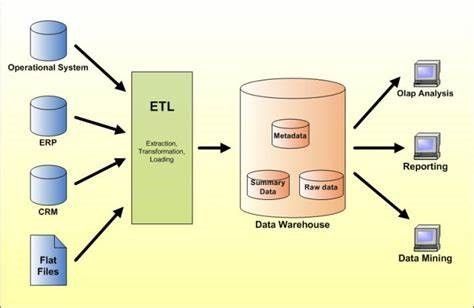
Why is data modeling necessary?

Key Benefits of a Cloud Data Warehouse
A cloud data warehouse is housed on a computing platform. It offers a central location for storing vast amounts of data from different sources and enables users to view, analyze, and gain insights using data visualization tools.
Why is data modeling necessary?
- Organizing Data: Data modeling organizes data in a structured manner that makes it easy to store, retrieve, and analyze. By defining relationships and constraints between different data elements, it creates a blueprint for how the data should be organized.
- Communication: It helps in communicating the data requirements between different stakeholders such as business users, data analysts, and developers. Data models act as a common language that everyone can understand, ensuring that all parties have a clear understanding of what data is needed and how it should be structured.
- Maintenance: Data models provide a framework for maintaining the data over time. As the business changes and new data requirements arise, the data model can be updated to reflect those changes, ensuring that the data remains relevant and useful.
- Analysis: Data modeling helps in analyzing the data by providing a structure for how data can be combined and manipulated. It helps in identifying relationships between different data elements and allows for more accurate analysis and reporting.
Maintenance and Evolution:
Database maintenance and evolution are made easier by data modeling, which also enables databases to change over time. Data modeling makes it simpler to modify the database schema as the needs of the company change by presenting a clear understanding of the data and its relationships.
Types of Data Model Architectures
To arrange and format data in a way that makes it simpler to comprehend and use, data models, are used. The following examples highlight the distinguishing features and benefits of the three main types of data models:
Logical data model
A logical data model is a particular kind of data model that concentrates on the relationships between business entities. It contains information about entities, connections, and data attributes.
This kind of model is employed to guarantee data accuracy and consistency and to give various business units or departments a shared grasp of the data.
Logical data models also include metadata such as data definitions, business principles, and data quality specifications that describe the meaning and context of the data.
Physical data model
The primary focus of the physical data model is the actual implementation of the data. It includes details on the file organization, access controls, and data storing format.
To improve database efficiency and make sure that data is preserved as effectively as possible, this type of model is used. tangible data models also include metadata that describes the data's tangible characteristics, such as field lengths, data types, and indexes.
Conceptual data model
An organization's data is represented at a high level in a conceptual data model, which gives a general overview of the data components, relationships, and business rules at play. It is a condensed view of the information that emphasizes business ideas and how they relate to one another rather than technical details.
A conceptual data model's main objective is to give stakeholders a shared grasp of the data requirements. When it comes to the data being used and how it is related, it helps to ensure that everyone engaged in a project is on the same page.
Conceptual data models frequently use straightforward language and diagrams that are basic enough for non-technical stakeholders to understand.
Data Warehousing Models
Several layers of data modeling techniques are usually used in data warehousing models to help organize and manage massive amounts of data. The following examples emphasize the primary characteristics and functionality of each of the three major layers:
Staging layer
The staging layer, which acts as a temporary storage place for data that has been extracted from source systems, is a crucial element of data warehousing models. The staging layer's main goal is to ensure that the data is accurate, full, and consistent as it is being prepared for integration into the data warehouse.
The intermediate layer
The intermediate layer, which is the second tier in a data warehousing architecture, is used to keep data in a relational database. This stage is also referred to as the operational data store (ODS) layer in data warehousing models.
Its primary function is to keep data in a form that is suitable for analysis and querying. Normalization techniques are typically used in the construction of this layer to ensure data consistency and reduce data redundancy.
The intermediate layer may also contain metadata, which is used to describe the data in the data warehouse and to provide information about data lineage, data quality, and data connections. Its main purpose is to store data in a format that is ideal for querying and analysis.
Data mart layer
The data mart layer, which is the third and final layer in a data warehousing model, is used to store data marts created to serve end users' analytical needs. Data marts are typically constructed in accordance with organizational structures or functions, and they are designed for specific analytical duties like data mining or reporting.
The purpose of a specific type of data warehousing model known as a "data vault" is to keep historical data and provide a thorough overview of the data over time.
Normalization Schemas
The process of normalizing data in a database aims to enhance consistency and reduce redundancy. Although normalization is a crucial component of database architecture, it is not always the most effective strategy for data warehousing.